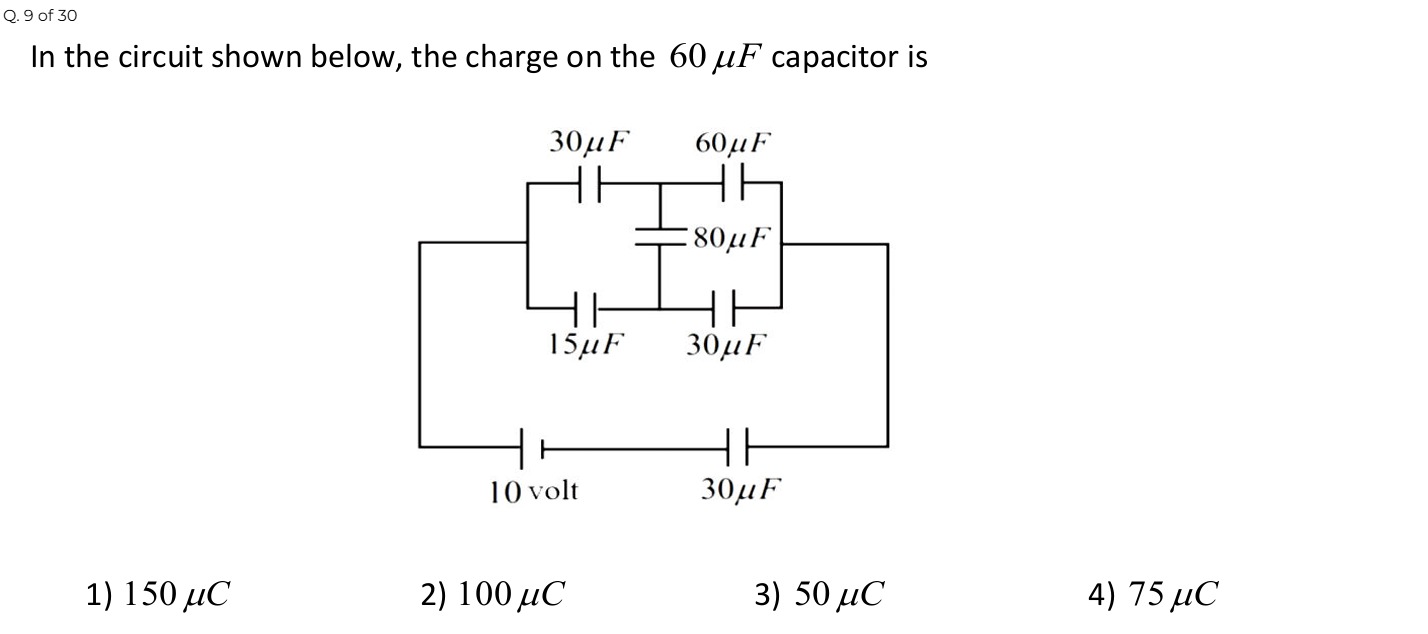Question
Question: In the circuit shown below, the charge on the 60 μF capacitor is...
In the circuit shown below, the charge on the 60 μF capacitor is

A
150 μC
B
100 μC
C
50 μC
D
75 μC
Answer
150 μC
Explanation
Solution
Step 1: Identify the bridge network and check balance
We have two series branches between the same nodes:
- Top branch: 30 μF – 60 μF
- Bottom branch: 15 μF – 30 μF
With a central 80 μF between the junctions.
The bridge is balanced if
Hence no current (charge) flows through the 80 μF, so it can be removed.
Step 2: Reduce each series branch
Top branch equivalent:
Bottom branch equivalent:
Cb=15+3015×30=10μFStep 3: Parallel combination of the two reduced branches
Cnet=Ct+Cb=20+10=30μFStep 4: Series with the bottom 30 μF capacitor and the 10 V source
Total series capacitance:
Charge on each series element:
Q=Ceq×V=15μF×10V=150μCSince the 60 μF capacitor is in series in the top branch, it carries the same charge:
Q60=150μC